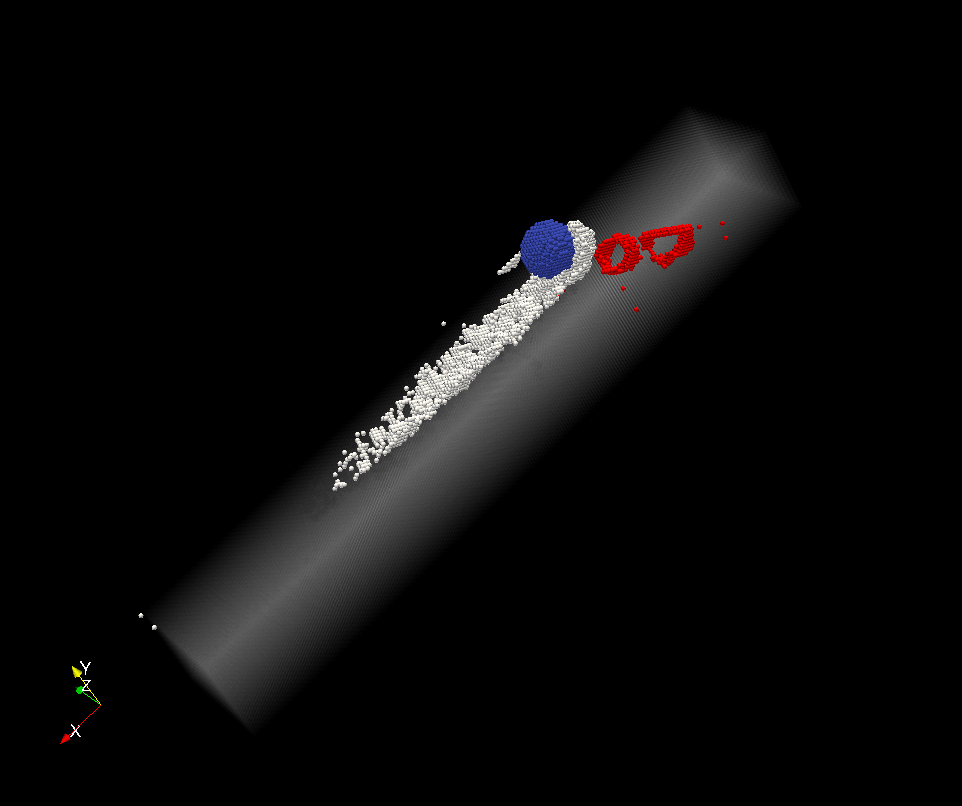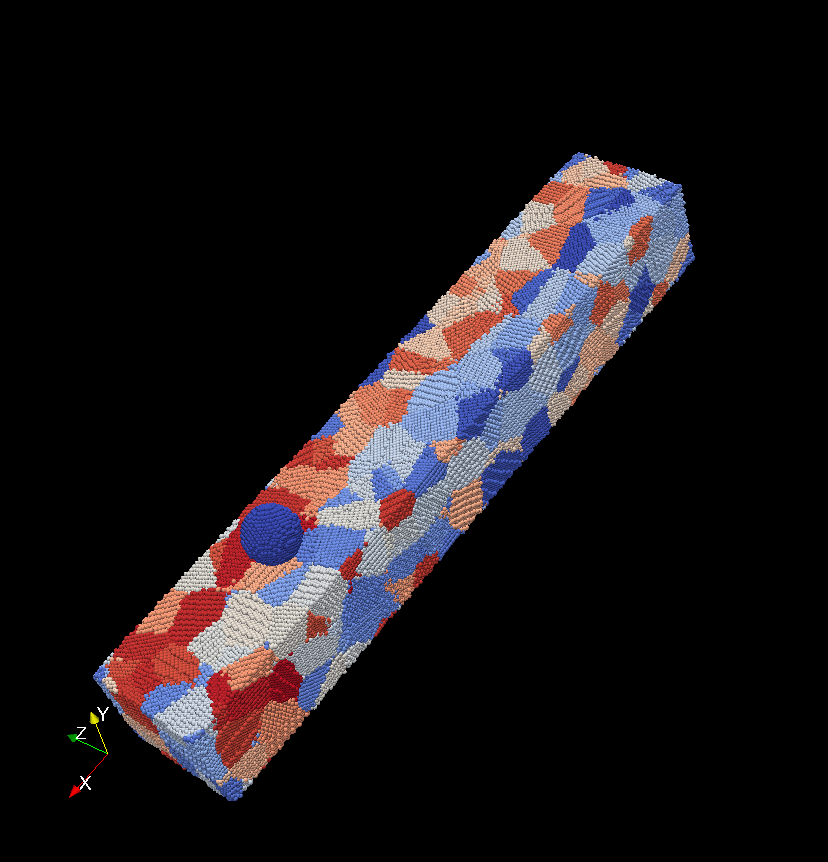Nanoscale scratch tests can provide insights to uncover the atomic origins of friction in crystalline metals. The technique of molecular dynamics allows to study all involved mechanisms in great detail. Figure 1 shows a snapshot of such a scratch. Note that the effects of friction can be investigated atom by atom.
 |
| Figure 1: Snapshot during simulation: white atoms belong to the rigid indenter. The other atoms are coloured according to their displacement (dark blue: no displacement). Only half of the simulated domain is shown in order to make the plastic deformation in the bulk under the indenter and in the groove behind the indenter visible. |
Although it is the sole source of wear and tear, plasticity is one of the most neglected phenomena in the atomistic study of friction. Plasticity in crystalline metals is due to the nucleation, annihilation and motion of dislocations. Figure 2 shows two dislocation loops which nucleated under the indenter and traveled into the bulk. Note also the groove left behind the indenter.
 |
| Figure 2: Snapshots of dislocation patterns. The indenter atoms are represented by blue spheres, red spheres represent dislocated atoms in the bulk and white spheres belong to chip and groove atoms. All other atoms are represented by transparent white dots. |
We have also developed a method for the assessment of the energy involved (stored or dissipated) with plasticity during friction and use it to investigate both frictional contact for both monocrystalline and polycrystalline metals.
 |
